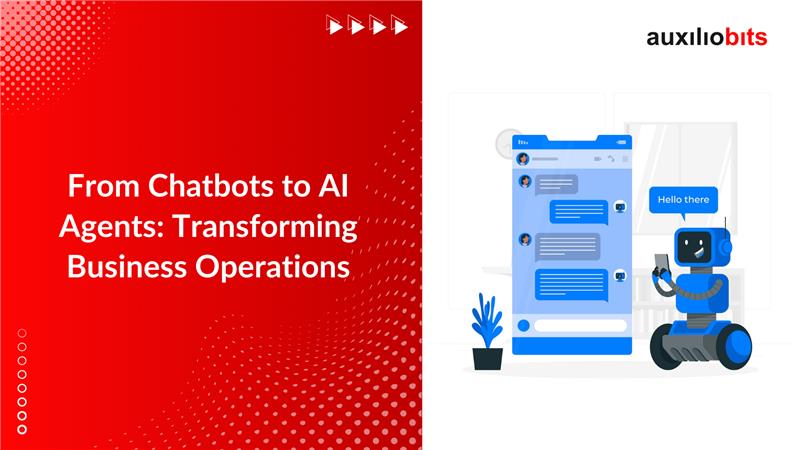
Key Takeaways
- AI has evolved from simple chatbots to sophisticated autonomous agents, offering businesses task automation, decision-making, and continuous learning. This significantly enhances operational efficiency and reduces human intervention.
- Autonomous AI agents boost business efficiency by automating tasks, reducing costs, and improving decision-making accuracy. They streamline operations and enhance customer experiences, contributing to overall business success.
- Technologies like computer vision, reinforcement learning, and RPA empower autonomous AI agents. These technologies enable real-time visual analysis, self-learning decision-making, and task automation, enhancing productivity across various industries.
- Reinforcement learning allows AI agents to adapt to new situations and improve performance. This self-learning capability optimizes decision-making in dynamic environments like supply chain management and financial trading.
- Robotic Process Automation (RPA) enhances AI agents by automating routine tasks. When combined with AI, RPA boosts operational productivity, enabling businesses to streamline processes like data entry, customer service, and payroll management.
In a world where machines become more innovative every second and algorithms work efficiently, AI has emerged as the ruler of our everyday lives. From obtaining personalized shopping suggestions to self-driving cars, etc, artificial intelligence is refining sectors, societies, and even how people think. What once seemed like a dream is currently a reality. It is just not a tool. It is a driving force that automates tasks, powers innovation, and governs decisions. The age of AI isn’t coming. It is already here and is leading the way.
Initially, artificial intelligence was limited to chatbots and automation that managed customer queries. But with time, AI technologies progressed, so did their capabilities. Currently, autonomous AI agents are redefining operational efficiency by offering innovative solutions, managing tasks, and making decisions with less human intervention. Unlike conventional bots that follow pre-determined instructions/responses, AI agents utilize ML, NLP, and computer vision to recognize, evaluate, and respond to challenging situations.
Also read: AWS Step Functions for Complex Agentic Workflows in Logistics
Understanding the Evolution: Chatbots to Autonomous AI Agents
Artificial Intelligence has witnessed a remarkable development, from simple chatbots to sophisticated autonomous AI agents. These autonomous agents have something or the other to offer. Let’s explore this transformation in three stages:
1. Chatbots: The Starting Point
Do you know which AI systems were the earliest to understand human dialogue and work like them? Yes, you guessed right. Chatbots imitated human dialogue and were used for various purposes. Businesses used chatbots to identify what customers wanted. From understanding their needs to helping them with product information and handling their queries, chatbots helped to an extent.
Skills:
- Rule-based responses with minimal learning ability.
- Predefined conversational flows.
- Simple keyword detection to generate responses.
Use Cases:
- Customer support for answering frequently asked questions.
- Using conversational forms to initiate return on investment and lead generation.
- Helping customers purchase by providing a product recommendation.
Limitations:
- Lack of contextual understanding and conversational memory.
- Inability to handle complex, multi-turn conversations.
- Struggled to adapt when queries deviated from their script.
Chatbots were beneficial for performing basic tasks. Nevertheless, they could not fulfill the demands. Therefore, this distance prompted firms to identify the necessity of more advanced AI systems that could help them.
2. Conversational AI: A Step Forward
Some firms have switched from chatbots to a different substitution: conversational artificial intelligence. Driven by natural language understanding and machine learning, it helps businesses achieve their goals by considering user sentiments. It also allows companies to fulfill their requirements, resulting in better operations.
Capabilities:
- Responsible in handling client queries.
- Helps customers make wise decisions by considering their needs.
- Everyday learning utilizes machine learning advanced algorithms.
- Gathering information and connecting with backend systems.
Use Cases:
- Helping customers get their hands on items of their choice.
- Helping all the IT professionals to enhance their workflow.
Advantages:
- Once the context is understood, it becomes feasible to understand intricate questions.
- Gain customer loyalty by providing tailored responses.
Conversational AI systems represented a notable advancement, yet they remained constrained in their ability to make independent decisions and manage tasks across different functions.
3. Autonomous AI Agents: The Future of Business Operations
When conversational artificial intelligence is combined with conventional chatbots, it lessens the need for humans. From conducting regular tasks to partnering with humans, autonomous AI agents work wonders. These autonomous artificial agents have been proven to help businesses succeed and are transforming companies’ operations.
Capabilities:
- Task Automation: Automates tasks, reducing the need for employees.
- Decision-Making: Considers evidence to assess latest data and take a call.
- Self-Learning: Enhance capabilities by utilizing reinforcement learning techniques.
- Contextual Adaptation: Adapt to changes and understand the evolving environment.
- Collaboration: Interact seamlessly with a variety of AI platforms and human users.
Use Cases:
- Fraud Detection: Most financial settings use AI agents to detect unusual behavior and transactions.
- Supply Chain Optimization: AI agents can optimize logistics operations and manage inventory and demand.
- Predictive Maintenance: In manufacturing, AI agents analyze sensor data to detect equipment failures before they occur.
The Impact on Businesses:
- Efficiency Gains: Tasks that consumed too much time are completed in the blink of an eye.
- Cost Reduction: Businesses can take a pass on hiring employees. Also, they can avoid any inefficiency.
- Enhanced Accuracy: Data-driven decisions minimize errors and ensure consistency.
Key Technologies Powering Autonomous AI Agents
Businesses that cannot conduct daunting tasks can now depend on autonomous AI agents to get the job done. These agents combine with several technologies to help firms function efficiently. What are these technologies? We have got you covered.
1. Computer Vision
Computer vision helps artificial intelligence agents elucidate and recognize visual details collected from live streams, videos, and pictures. AI agents can make real-time decisions and detect objects by understanding human sentiments.
This capability is advantageous in visual analysis scenarios, such as surveillance, quality control, and medical diagnostics.
How It Works:
- Image Recognition: AI agents use deep learning algorithms to identify objects, people, or image anomalies.
- Optical Character Recognition (OCR): Extracts and interprets text from scanned documents, invoices, or handwritten forms.
- Video Analysis: Tracks movements, detects abnormalities, and provides real-time insights in industries like security and transportation.
Use Cases:
- Insurance Claims: AI uses pictures and videos to find if a vehicle or property is damaged.
- Healthcare: Computer Vision assists in diagnosing medical conditions by analyzing X-rays, MRIs, and other medical imagery.
- Manufacturing: With the help of automated visual inspections, AI systems ensure that a product’s quality is not hampered.
- Retail: Innovative systems identify defective items and ensure a seamless customer shopping experience. AI agents can help businesses make the right decisions without human supervision if computer vision is integrated correctly.
2. Reinforcement Learning
Reinforcement Learning (RL) is an aspect of machine learning in which AI agents acquire knowledge by engaging with their surroundings and obtaining opinions in the form of benefits or consequences. In contrast to conventional AI models that depend on fixed datasets, agents powered by reinforcement learning can adjust to fresh situations, enhance decision-making, and boost their performance as time progresses.
How It Works:
- Interaction Between Agent and Environment: The AI agent evaluates situations, notes the results, and modifies its approach.
- Incentive System: Favorable behaviors receive rewards, motivating the agent to adopt effective strategies.
- Policy Enhancement: Using repeated learning, the agent hones its decision-making abilities.
Use Cases:
- Supply Chain Management: Artificial intelligence agents enhance logistics, forecast demand, and adapt inventory levels in real time.
- Financial Trading: AI systems operate independently to make real-time trading decisions by examining market data and adjusting strategies accordingly.
- Robotics: Reinforcement Learning Education enables robots to navigate surroundings, avoid barriers, and accomplish intricate assignments.
- Healthcare: Artificial intelligence agents enhance treatment planning by consistently refining diagnostic precision by integrating new patient information.
With its self-learning capabilities, Reinforcement Learning enables AI agents to operate in unpredictable environments and make smarter decisions over time.
3. Robotic Process Automation (RPA)
Robotic Process Automation (RPA) technology streamlines the execution of rule-based, monotonous duties throughout company systems. Although RPA lacks inherent intelligence, its integration with artificial intelligence (AI) skills significantly boosts the productivity and autonomy of AI agents.
How It Works:
- Task Automation: RPA bots execute mundane tasks such as data entry, form filling, and report generation.
- AI Integration: AI agents analyze data, make decisions, and instruct RPA bots to perform actions.
- Process Optimization: AI identifies inefficiencies in workflows and suggests improvements.
Use Cases:
- Finance and Accounting: Automates invoice processing, reconciliations, and expense management.
- Healthcare: Manages patient records, processes insurance claims, and handles appointment scheduling.
- Customer Service: AI agents use RPA bots to retrieve customer data, process requests, and resolve inquiries.
- Human Resources: Automates onboarding processes, payroll management, and employee data updates.
Firms set themselves apart from their competitors as their business improves. This is possible after the implementation of robotic process automation with artificial intelligence. Autonomous AI agents overseeing RPA operations ensure intelligent decision-making and seamless execution of complex workflows.
Also read: HyperAutomation: Beyond RPA to Full-Scale Enterprise Autonomy
The Final Verdict
The advancement of artificial intelligence in company operations has been revolutionary, ranging from chatbots to entirely self-sufficient AI agents. Organizations utilizing AI agents benefit from optimized workflows, superior decision-making, and heightened customer satisfaction. With the progression of AI, entities that adopt it and incorporate it into their workflows will gain a notable advantage in the marketplace.
Are you ready to explore how AI agents can transform your business as AI advances? Contact our experts today to learn more.



